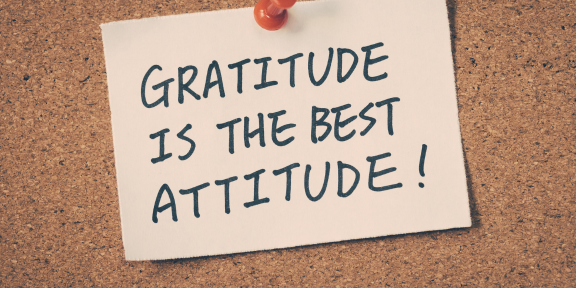Gratitude is a powerful emotion that can transform your life, bringing positivity, joy, and abundance. By cultivating a regular gratitude practice, you can shift your mindset from scarcity to abundance, from negativity to positivity, and from doubt to trust in the universe.
In this article, we will explore various gratitude practices that you can easily incorporate into your personal growth routine. We will discuss the benefits of cultivating gratitude, including its positive impact on overall well-being. We will also provide practical tips and techniques for gratitude meditation, gratitude journaling, gratitude affirmations, and other gratitude exercises for different life situations.
So, if you’re ready to unlock your potential and live a life filled with gratefulness and abundance, let’s get started on this journey of self-discovery and transformation through gratitude practices!
Understanding Gratitude and Its Impact on Well-being
Gratitude is more than just saying thank you. It is a powerful tool that can improve overall well-being, both physically and mentally.
Research has shown that gratitude practices can boost happiness, reduce stress, and even improve sleep quality. Practicing gratitude also has positive effects on the brain, increasing activity in areas associated with empathy and social bonding.
When we focus on what we are grateful for, we shift our attention away from negative thoughts and emotions, leading to a more positive mindset. This can have a ripple effect on all aspects of our lives, improving relationships, productivity, and overall satisfaction.
The Science behind Gratitude
Studies have found that individuals who practice gratitude on a regular basis experience increased feelings of positivity and well-being. One study found that participants who wrote down what they were grateful for several times a week experienced greater levels of happiness and overall satisfaction with life.
Gratitude practices have also been linked to physical health benefits, such as lower blood pressure and improved immune system function. Additionally, individuals who regularly practice gratitude report better quality of sleep and decreased symptoms of depression and anxiety.
How Gratitude Practices Contribute to a Positive Mindset
When we intentionally focus on gratitude, we train our brains to look for the good in our lives. This can help shift our perspective from one of scarcity to abundance, leading to feelings of contentment and fulfillment.
In addition, gratitude practices can help cultivate a sense of mindfulness, bringing us more fully into the present moment and increasing our awareness of the positive experiences in our lives.
Overall, practicing gratitude is a simple but powerful way to improve our well-being and unlock our potential for a happier, more fulfilling life.

Cultivating Gratitude: Practical Tips and Techniques
Gratitude is a powerful practice that can have a transformative impact on our lives. Here are some practical tips and techniques to cultivate gratitude in your daily life:
1. Gratitude journaling
One of the most effective gratitude practices is keeping a gratitude journal. Set aside a few minutes each day to write down three things you’re grateful for. It can be as simple as “having a roof over my head” or “enjoying a cup of coffee in the morning.” By focusing on the positive aspects of your life, you’ll begin to shift your mindset to one of gratitude.
2. Gratitude meditation
Another way to cultivate gratitude is through meditation. Find a quiet place to sit and reflect on the things in your life that you’re grateful for. Focus on your breath and allow yourself to feel the gratitude in your body. If you’re new to meditation, there are plenty of guided meditations available online to help you get started.
3. Gratitude walks
Take a walk in nature and focus on the beauty around you. Notice the colors of the leaves, the sound of birds chirping, and the feeling of the sun on your skin. Take a moment to reflect on the abundance in your life and express gratitude for it.
4. Gratitude letters
Write a letter expressing your gratitude to someone you care about. It can be a family member, friend, or colleague. Let them know how much you appreciate them and the positive impact they’ve had on your life. Not only will this practice deepen your own feelings of gratitude, but it will also create positive connections with those around you.
5. Gratitude affirmations
Affirmations are positive statements that can help shift your mindset to one of gratitude. Write down a few gratitude affirmations and repeat them to yourself each day. For example, “I am grateful for all the abundance in my life” or “I am thankful for the people who support and love me.”
By incorporating these gratitude practices into your daily routine, you’ll begin to notice a shift in your mindset. You’ll feel more positive, optimistic, and content with your life. Remember to be patient with yourself – cultivating gratitude is a journey that takes time and practice.

The Power of Gratitude Journaling
Gratitude journaling can be a powerful tool in cultivating a grateful mindset. By writing down what we are thankful for, we can train our brains to focus on the positive aspects of our lives and improve our overall well-being.
“Gratitude unlocks the fullness of life. It turns what we have into enough, and more. It turns denial into acceptance, chaos to order, confusion to clarity. It can turn a meal into a feast, a house into a home, a stranger into a friend.” – Melody Beattie
One way to get started with gratitude journaling is to set aside time each day to write down three things you are grateful for. This can be as simple as “the sun shining today” or “a warm cup of tea in the morning.” The key is to focus on the positive aspects of your life, no matter how small they may seem.
Another technique is to reflect on a positive experience you had during the day and write about why you are grateful for it. This can help you develop a greater appreciation for the good things in your life and create a more optimistic outlook.
| Benefits of Gratitude Journaling |
|---|
| 1. Increases positive emotions and overall happiness. |
| 2. Reduces stress and negative thinking patterns. |
| 3. Improves sleep quality and duration. |
| 4. Boosts immune system function and physical health. |
Remember that gratitude journaling is a personal practice, and there is no “right” or “wrong” way to do it. Experiment with different techniques and find what works best for you. The most important thing is to make it a consistent habit and focus on the positive aspects of your life.

Gratitude Meditation: Connecting with Inner Gratitude
Gratitude meditation is a powerful way to cultivate a deeper sense of gratitude and inner peace. It involves focusing your attention on the things you are grateful for, allowing you to shift your perspective towards positivity and abundance. Here’s how you can start your own gratitude meditation practice:
Step-by-Step Guide
- Find a quiet place where you won’t be disturbed. Sit comfortably with your back straight and your hands resting on your lap.
- Close your eyes and take a few deep breaths, allowing your body and mind to relax.
- Bring to mind something you are grateful for, whether it’s a person, a place, or a thing. Visualize it in your mind and allow yourself to feel the gratitude and joy it brings you.
- Repeat this process, bringing to mind different things you are grateful for and allowing yourself to fully experience the positive emotions associated with them.
- As you continue your gratitude meditation, you will find that your mindset shifts towards positivity and abundance, helping you to attract more of that into your life.
Feel free to adapt this process to suit your own needs and preferences. You can also experiment with different variations of gratitude meditation, such as writing down what you are grateful for, or expressing your gratitude out loud.
“Gratitude is not only the greatest of virtues, but the parent of all others.” – Marcus Tullius Cicero
Incorporating Gratitude Affirmations into Daily Life
When we fill our minds with positive thoughts and affirmations, we open ourselves up to experiencing more gratitude in our lives. Gratitude affirmations are powerful tools for shifting our mindset and attracting more abundance into our lives. Here are some tips for incorporating gratitude affirmations into your daily routine:
- Start your day with gratitude: Begin your day with a simple affirmation such as “I am grateful for this new day and all the opportunities it brings.”
- Practice gratitude throughout the day: Set periodic reminders on your phone or computer to recite a gratitude affirmation or simply take a moment to pause and express gratitude for something in your life.
- Use gratitude affirmations during meditation: Incorporate gratitude affirmations into your meditation practice to deepen your connection with feelings of gratitude.
- Write down gratitude affirmations: Write down your favorite gratitude affirmations in a journal or on sticky notes and place them where you will see them throughout the day.
“Gratitude makes sense of our past, brings peace for today, and creates a vision for tomorrow.” -Melody Beattie
Remember that the key to making gratitude affirmations work is to truly believe in them. Embrace the positive emotions that come with expressing gratitude and allow them to permeate throughout your day. By doing so, you’ll open yourself up to experiencing more abundance, joy, and peace in your life.

Daily Gratitude Practices: Making Gratitude a Habit
Practicing gratitude daily is essential for reaping its positive benefits and transforming your mindset. Here are some practical tips for making gratitude a habit:
- Start each day with a grateful heart. Before getting out of bed, take a few moments to reflect on the things you are grateful for.
- Create a gratitude journal and write in it every day, listing at least three things you are grateful for. This will help you focus on the positive in your life.
- Set reminders throughout the day to for your gratitude practices, whether it’s a sticky note on your computer or a notification on your phone.
- Include gratitude in your daily conversations. Make a habit of expressing gratitude to those around you and acknowledging the good things in their lives.
By making gratitude a consistent part of your routine, you will begin to see the world in a more positive light and experience a greater sense of fulfillment and joy.
Deepening Gratitude: Taking on the Gratitude Challenge
Are you ready to take your gratitude practice to the next level? The gratitude challenge is a powerful way to deepen your gratitude and transform your outlook on life. By actively seeking out and expressing gratitude in various aspects of your life, you can cultivate a more positive attitude and increase your overall well-being.
How to Take on the Gratitude Challenge
The gratitude challenge is a simple yet effective way to make gratitude a habit. Here’s how to get started:
- Set an intention: Start by setting an intention to cultivate gratitude in your daily life. This can be as simple as saying to yourself, “I am open to receiving and expressing gratitude.”
- Keep a gratitude journal: Each day, write down three things you’re grateful for in your gratitude journal. Be specific and focus on the positive experiences and people in your life.
- Express gratitude: Take the time to express your gratitude to others. This can be through a simple “thank you” or a heartfelt message of appreciation.
- Practice mindfulness: Stay present and mindful throughout the day, taking note of things you’re grateful for as they happen.
- Reflect on the day: At the end of each day, take a few minutes to reflect on the good things that happened and the people you’re grateful for.
The Power of the Gratitude Challenge
The gratitude challenge can have transformative effects on your mindset and well-being. By actively seeking out and expressing gratitude, you can shift your focus from what’s lacking to what’s already present in your life. This can lead to increased feelings of happiness, contentment, and fulfillment.
“Gratitude unlocks the fullness of life. It turns what we have into enough, and more. It turns denial into acceptance, chaos into order, and confusion into clarity. It can turn a meal into a feast, a house into a home, a stranger into a friend.”
By taking on the gratitude challenge, you are opening yourself up to more joy and abundance in your life. So why not start today? Take the first step towards a more grateful and fulfilling life.

Gratitude Exercises for Different Life Situations
To truly cultivate gratitude, it’s important to find gratitude in all areas of life. Here are some gratitude exercises to help you find appreciation in different life situations:
Gratitude for Relationships:
Think of someone in your life who has made a positive impact on you. Write a letter expressing your gratitude and detailing how they have helped you become the person you are today. If possible, deliver the letter in person and read it to them.
Gratitude for Career:
Think of a task or project you completed at work that you are particularly proud of. Write down three reasons why you are grateful for the experience. It could be the opportunity to learn, the satisfaction of a job well done, or the connections you made along the way.
Gratitude for Health:
Take a moment to be grateful for your body and its amazing abilities. Write down three things your body does every day that you are thankful for, whether it’s your ability to walk, breathe, or simply experience the world around you.
Gratitude for Personal Growth:
Think of a difficult situation you faced in the past that you were able to overcome. Write down three ways that experience helped you grow as a person. It could be increased resilience, a greater sense of empathy, or a new perspective on life.
Gratitude for Nature:
Spend some time outside in nature, whether it’s a walk in the park or simply sitting in your backyard. Take in the beauty around you and write down three things you are grateful for. It could be the colors of the changing leaves, the sound of birds chirping, or the feel of the sun on your skin.
These exercises can help you find gratitude in all areas of life, no matter how big or small. Remember to take the time to appreciate the good around you, and watch as your mindset shifts to one of positivity and abundance.

Frequently Asked Questions about Gratitude Practices
Gratitude practices have gained popularity in recent years for their positive impact on well-being and mindset. However, there may be some uncertainties and questions surrounding this practice. Here are the answers to some frequently asked questions about gratitude practices.
How long does it take to see results from gratitude practices?
The results of gratitude practices may vary from person to person, but research suggests that consistently practicing gratitude for as little as two weeks can have significant positive effects on well-being and mindset. To see the best results, it is recommended to make gratitude practices a daily habit.
What can I do when I’m feeling ungrateful?
It’s normal to have moments where you may feel ungrateful or have a negative mindset. When this happens, try to shift your focus to the present moment and take note of things you are grateful for. You can also try practicing gratitude meditation or journaling to help refocus your thoughts on positivity.
How can I overcome challenges in maintaining a gratitude practice?
Maintaining a gratitude practice can sometimes be challenging, especially during busy or stressful times. One way to overcome these challenges is to set a specific time each day for gratitude practices, such as in the morning or before bed. You can also try incorporating gratitude into your daily routine by expressing gratitude during meals or daily activities. Finally, it’s important to remember that gratitude is a practice and not a perfection, so be kind to yourself if you miss a day or struggle to maintain consistency.
Are there any risks associated with practicing gratitude?
Practicing gratitude is generally considered safe and has no known risks. However, it’s important to note that gratitude practices should not be used as a substitute for medical treatment or professional help for mental health issues. If you are experiencing severe depression, anxiety, or other mental health concerns, it’s important to seek professional help.
Cultivating gratitude through daily practices can lead to a more positive mindset, improve relationships, and increase overall well-being. With patience, consistency, and self-compassion, anyone can incorporate gratitude practices into their daily routine.
Personal Development Unlimited is your go-to place to be You, Without Limits. We bring together personal development and self-improvement articles, books, courses and videos in one place. Find your self-growth opportunities easily.
Comments
0 comments



